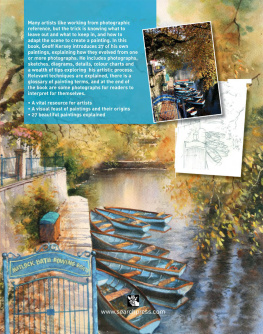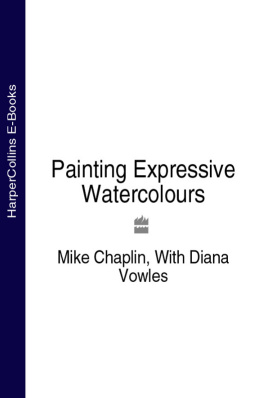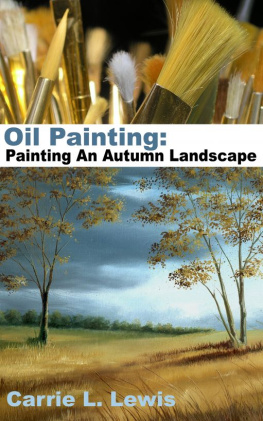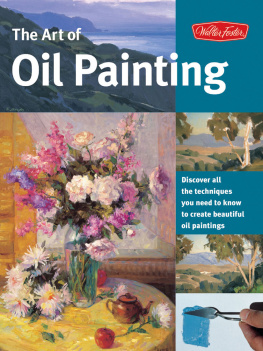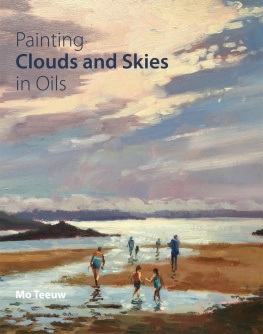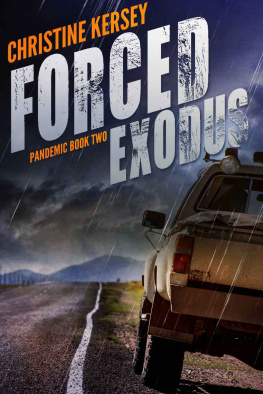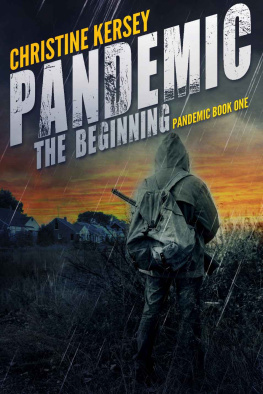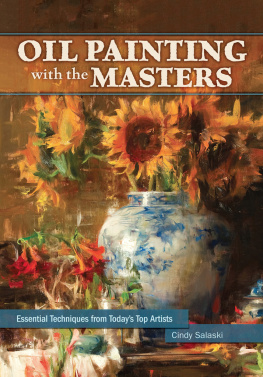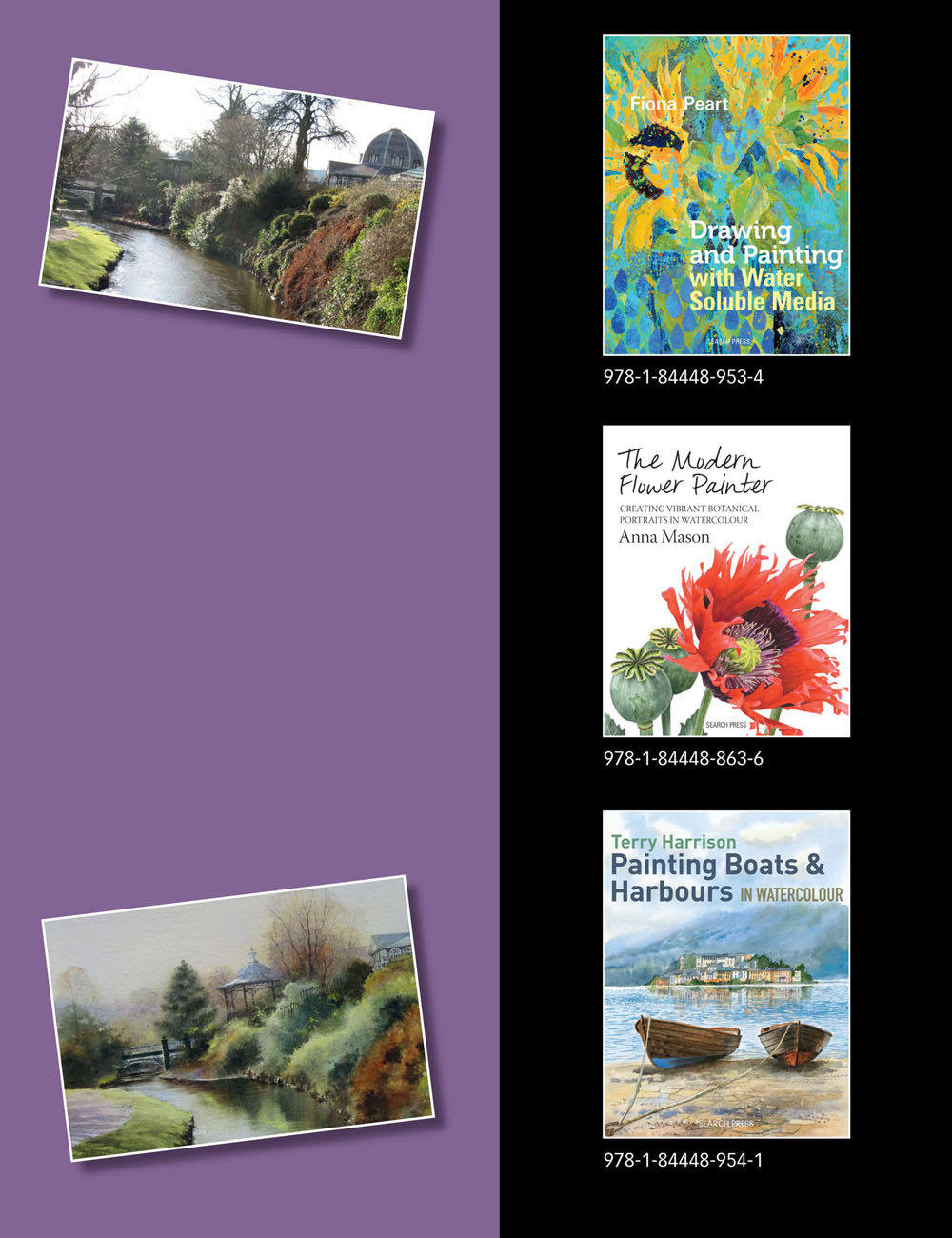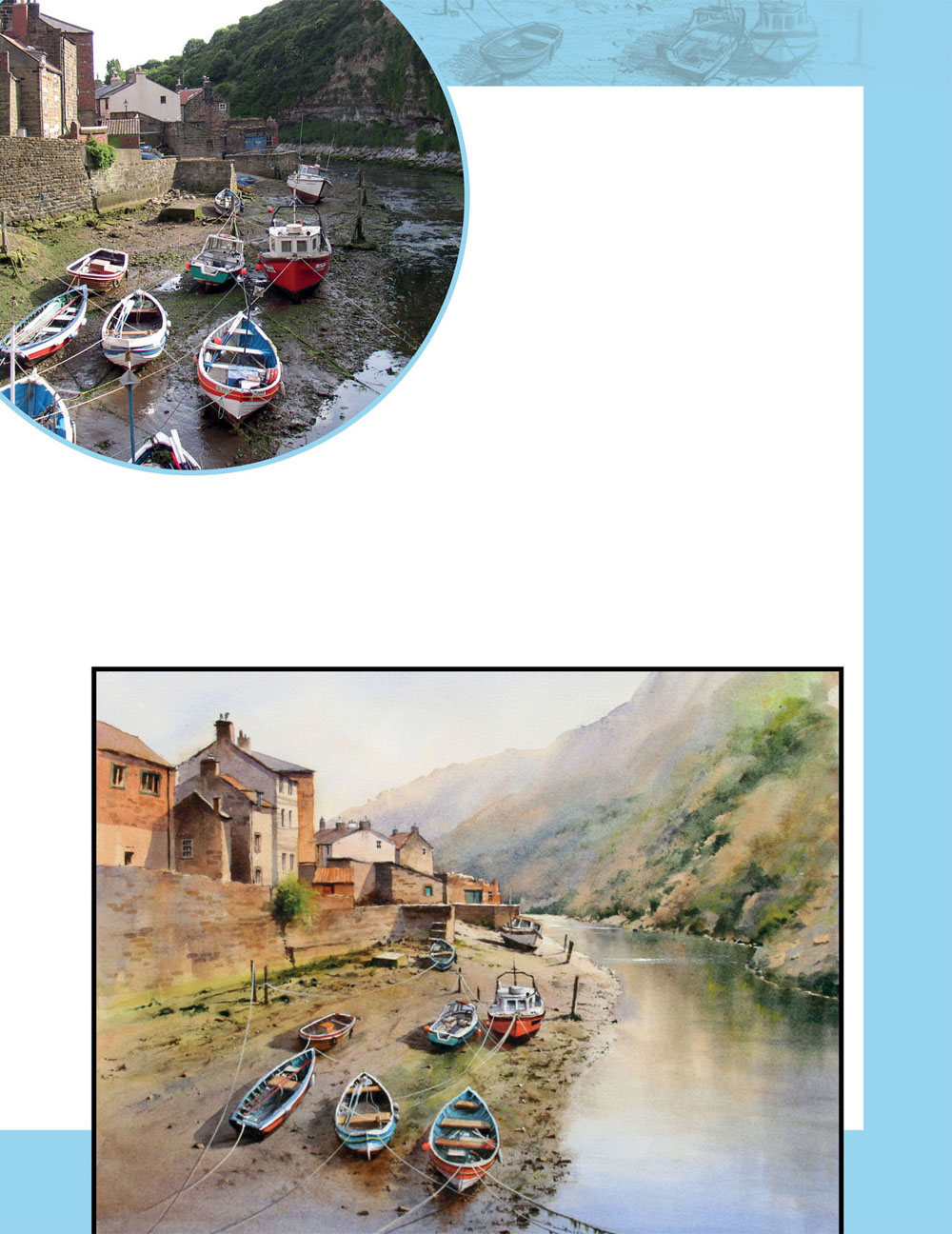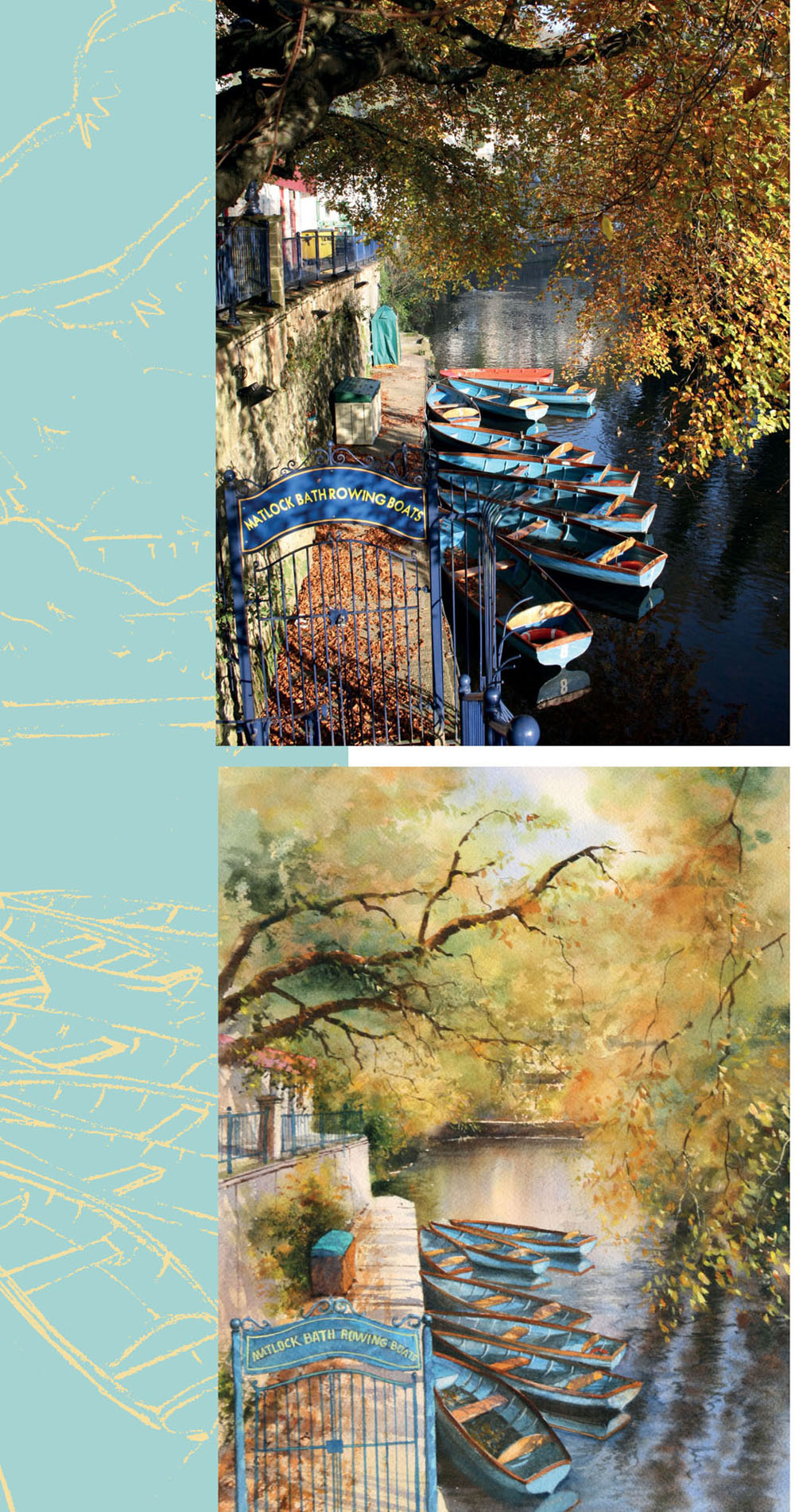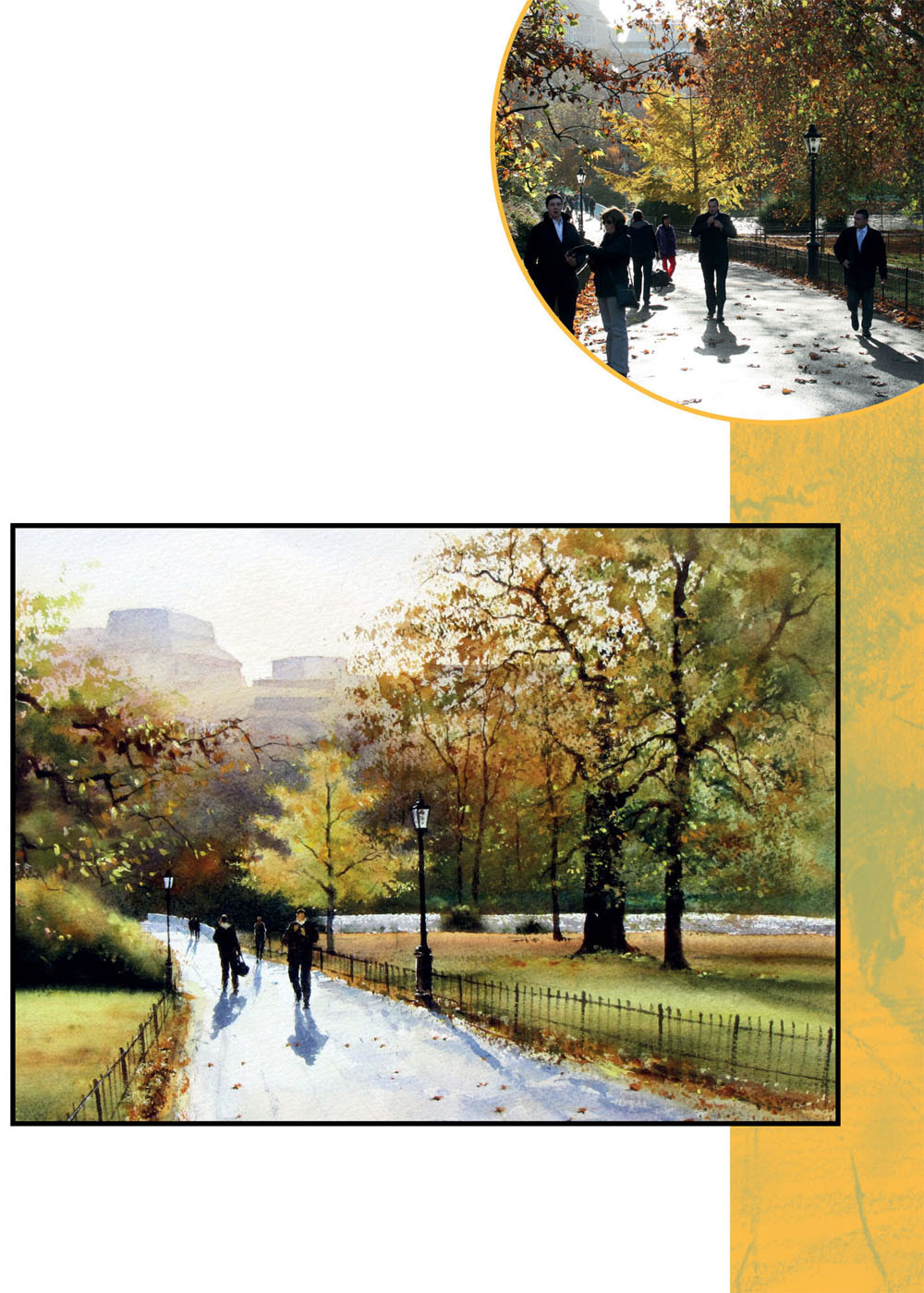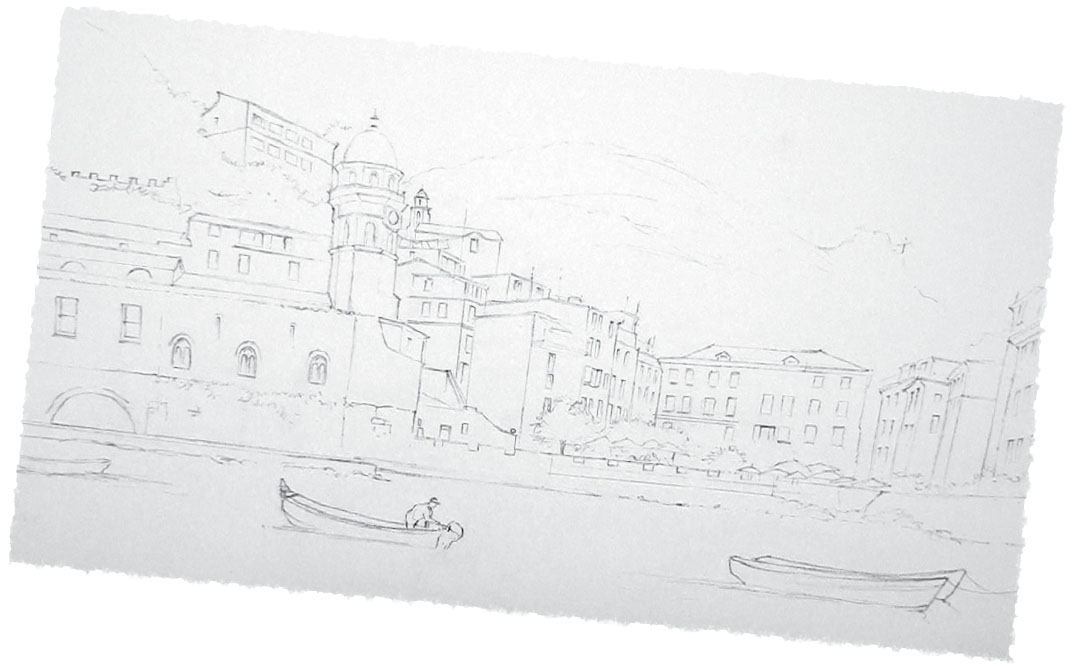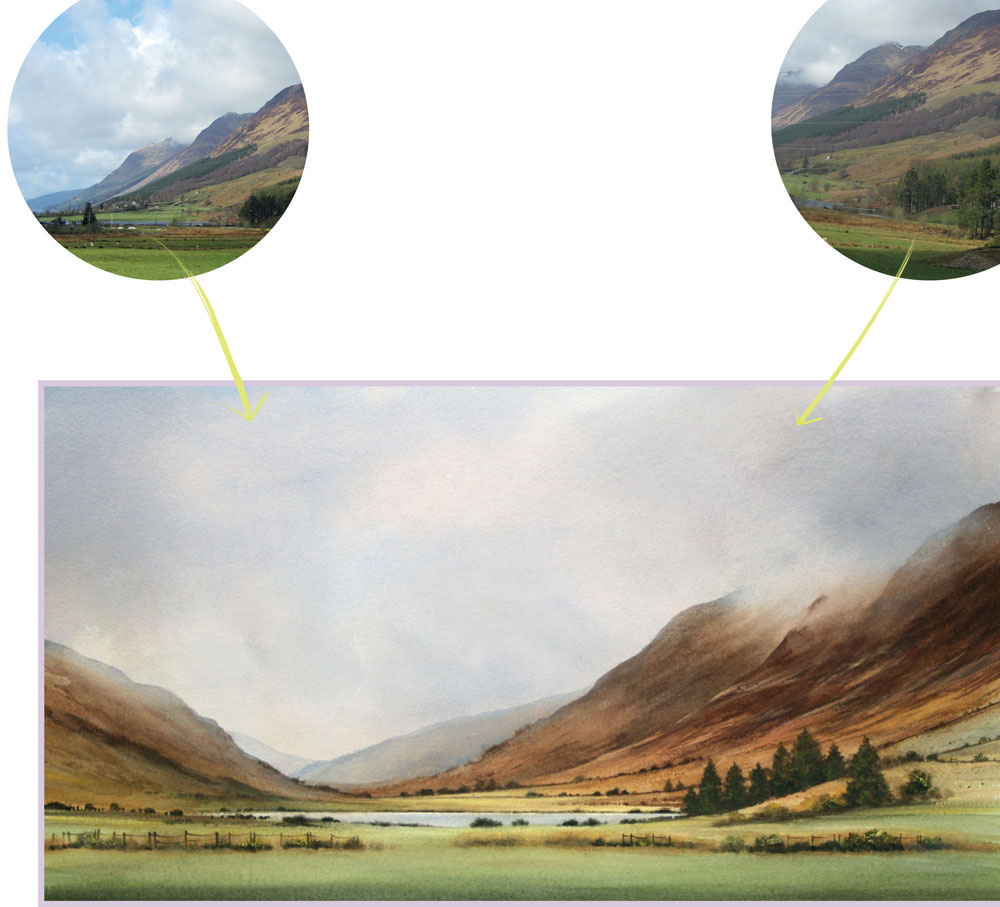Pagebreaks of the print version

Many people want to work from their own photographs but they often fall at the first hurdle: that of seeing the painting within the scene and knowing what to leave in and what to leave out; in other words, interpreting their photograph and translating it into a painting. In this book, I show you how I have worked mainly from my own photographs, giving insights into the choices I have made, the sketches and occasionally diagrams I have used in the process, and the colour mixes I have used in the eventual painting. I hope it will inspire you to go outdoors and look for painting subjects; to start composing the painting the moment you point the camera, and then to work effectively with the results.
Geoff Kersey
PAINTING SUCCESSFUL WATERCOLOURS
FROM PHOTOGRAPHS
PAINTING SUCCESSFUL WATERCOLOURS
FROM PHOTOGRAPHS
Geoff Kersey
First published 2015
Search Press Limited
Wellwood, North Farm Road,
Tunbridge Wells, Kent TN2 3DR
Text copyright Geoff Kersey 2015
Photographs by Geoff Kersey
Photographs and design copyright
Search Press Ltd 2015
All rights reserved. No part of this book,
text, photographs or illustrations may be
reproduced or transmitted in any form
or by any means by print, photoprint,
microfilm, microfiche, photocopier,
internet or in any way known or as yet
unknown, or stored in a retrieval system,
without written permission obtained
beforehand from Search Press.
ISBN: 978-1-84448-998-5
eISBN: 978-1-78126-681-6
The Publishers and author can accept
no responsibility for any consequences
arising from the information, advice or
instructions given in this publication.
Readers are permitted to reproduce
any of the items in this book for their
personal use, or for the purposes of
selling for charity, free of charge and
without the prior permission of the
Publishers. Any use of the items for
commercial purposes is not permitted
without the prior permission of the
Publishers.
Suppliers
If you have any difficulty obtaining any
of the materials and equipment
mentioned in this book, please visit the
Search Press website:
www.searchpress.com
Dedication
Dedicated to my editor, Sophie, who has worked tirelessly to turn the masses of images and information into a coherent book.
Front cover
Hillside Village
This photograph and painting are analysed in depth on pages 2427.
Fishing Port
This photograph and painting are analysed in depth on pages 8085.
Rowing Boats
This photograph and painting are analysed in depth on pages 5053.
London Park
This photograph and painting are analysed in depth on pages 3033.
Introduction
I got the idea for this book from all the watercolour landscape painting workshops and courses that I have taught over the years. These usually take the form of me deciding on a subject, finding an appropriate photograph, printing out a copy for everyone and then demonstrating the painting process, with all the students following, step by step. I realise this method of teaching does not suit every art teacher or student, but it works for me, and those attending usually go home pleased with the results.
Many people want to work from their own photographs, and indeed enjoy looking for potential subjects when they are out and about, but they often fall at the first hurdle: that of seeing the painting within the scene and knowing what to leave in and what to leave out; in other words, interpreting their photograph and translating it into a painting.
When I had just started watercolour landscape painting, about twenty-five years ago, I bought a book by an excellent watercolourist, James Fletcher Watson, who lived in the Cotswolds, UK. I was fascinated by one of his paintings, Windrush Mill, and while on holiday in that area, I determined to find this location and take some photographs, in order to produce my own painting of this subject. When I finally found Windrush Mill, I was disappointed. Not only did it not seem to have the magic of the painting, but try as I might, I couldnt see how the artist got the view in the painting reproduced in the book, as there was a large tree in the way. I realised at this point that you do not have to wait until you have found the perfect subject and composition; you can take what is in front of you and make it into a painting. The fact that an artist I admired had done this, made it acceptable to me. For me, this was an important realisation and lesson learned.
In my experience, you are lucky if you can find the perfect composition with every element in place, so being able to assess a photograph, see the painting within it, and interpret it, rather than copying it slavishly, broadens the number of subjects available to you enormously. In this book, I show you how I have worked mainly from my own photographs, giving insights into the choices I have made, the sketches and occasionally diagrams I have used in the process, and the colour mixes I have used in the eventual painting. This is not a book on painting techniques, but since some methods are mentioned in the descriptions I have given of the adaptation process, there is a chapter on painting techniques to help explain these at the beginning (see ).
This book is not about photography, and indeed the quality of the photographs is at best inconsistent. In a way though, that does not matter, as I do not want readers to think that they need a course in photography and expensive equipment in order to produce the standard of photographs needed as a starting point for a painting.
Most of the photographs featured in this book are snapshots, many taken with an inexpensive compact camera. I do have a more expensive SLR camera, but sometimes find it bulky, preferring to travel more lightly. None of the photographs are taken from inaccessible places that you need a high level of fitness to reach, or from exotic locations. In fact the photograph opposite was taken from the bedroom window of a hotel.
I hope this book will inspire you to go outdoors and look for painting subjects; to start composing the painting the moment you point the camera, and then to work effectively with the results.

